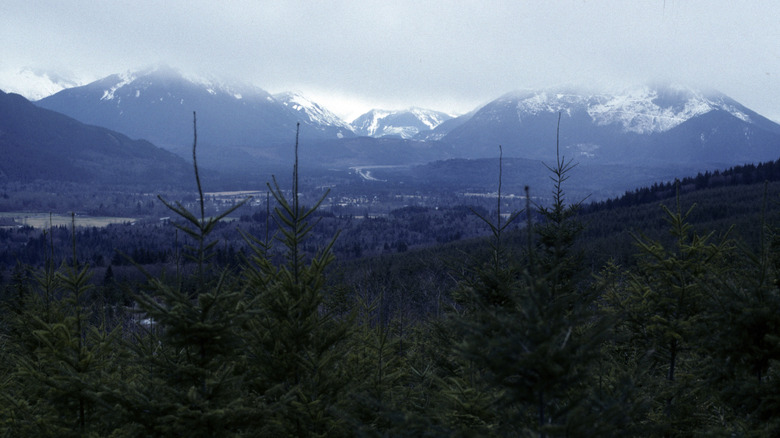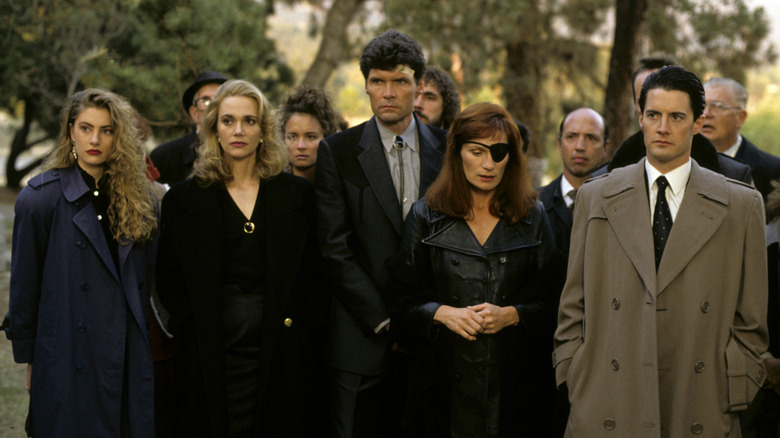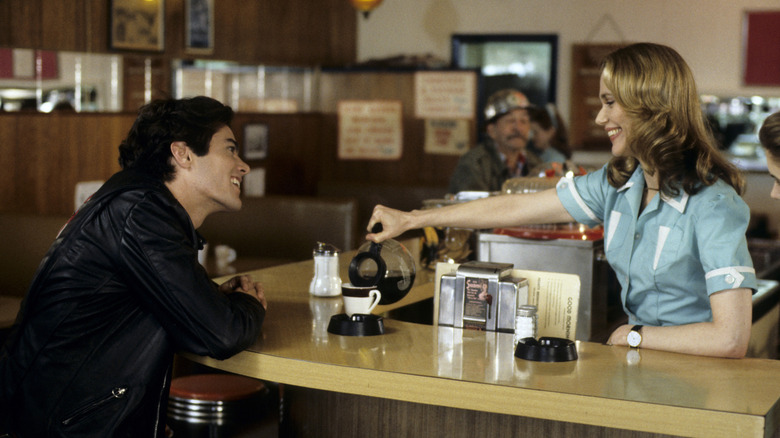Finding The Perfect Twin Peaks Town Location Was A Last-Minute Miracle
There are so many iconic characters from "Twin Peaks," but none bigger or more memorable than the town that lends the show its name. From the start, Mark Frost and the late, great David Lynch envisioned an ensemble show that told the story of a whole town, with disparate storylines overlapping over the course of the series. This structure was possible in part because of the extensive, multi-generational cast, but also because the fictional town the two created was full of nooks and crannies, perfect for all kinds of different stories.
And yet, the creators nearly didn't find the setting that would perfectly embody the world of the show they wrote. "The pilot was very specific," Frost explained in The Guardian's oral history of the show. "It had a hotel next to a waterfall. It had a picturesque train station, a sheriff's department, a high school, the diner. We went up to Seattle and scouted for five days, and we were really discouraged we hadn't found what we were looking for."
Thankfully, fate intervened. "On the last day, the location manager said: 'Well, there's one place I could show you. It's a little out of the way,'" Frost continued. That conversation led them to the towns of Snoqualmie and North Bend. "We drove out there the next day," Frost said, "and every single thing in the script was right there. It was spooky. We had just imagined a town that already existed."
How the titular Twin Peaks got its name
While the locations for "Twin Peaks" were found after extensive searching, far less planning went into selecting the fictional community's name. As Frost told The Guardian, he and Lynch met every day for lunch at a coffee shop to discuss the project, and one day, Lynch drew a map of the town "on the back of a placemat" for reference. "We had two mountains on the map," Frost explained. "When it came time to say, 'What's this town called?', I looked at it and said: 'Well, we could call it Twin Peaks.'"
The idea of centering on a teenage murder in a small town came largely from stories Frost had been told when he was young, particularly the murder of a girl he knew when he was 14. Lynch brought his own distinct creative predilections to the table; he's responsible for the show's early focus on the dream realm and the supernatural, as well as the abject strangeness of the many supporting characters.
Together, and with the right cast, the personality of the town took shape. And when the crew finally found the right physical locations to bring Twin Peaks to life, everything came together.
The small-town focus of Twin Peaks came from old Hollywood
When Mark Frost and David Lynch were given the opportunity to collaborate on a TV project together, the small-town story idea came up quickly. The 1957 movie "Peyton Place," based on the 1956 novel of the same name, served as particular inspiration, as it also told the story of dark, violent secrets held in the corners of an idyllic-seeming town. This sort of classic format covering a whole community was the north star early on for the project, with other details (like the supernatural elements) coming in later.
Everyone knows the rest of the story: The show became a massive hit, forever changing what studios and viewers believed television could be. Both co-creators returned in 2017 for the "Twin Peaks" revival series, going back to the iconic small town they'd created to complete the story that was cut short when the show was canceled in 1991.


